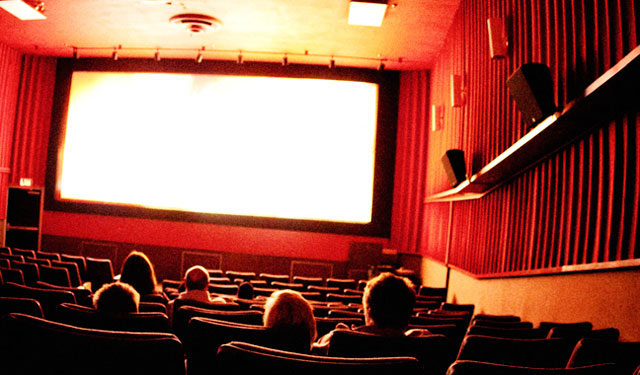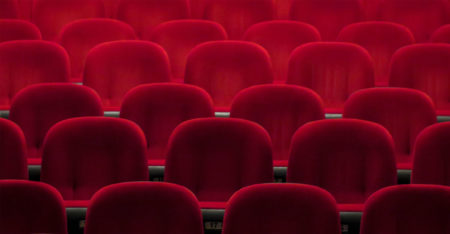
What is film? Film is the illusion of movement through the montage of still images, 24 or 25 photographs a second on lengths of translucent plastic. The result is the motion picture that we love and have loved since the late 19th century. What began as a rudimentary carnival trick and was subsequently pioneered by the Lumière brothers soon evolved into the bustling multibillion-dollar industry that we continue to indulge in to this day.
But, like the advent of sound and colour, the movies are once again poised to change, perhaps not on the scale of the former but in a no less significant way. Ster-Kinekor, the premier provider of cinematic entertainment in Southern Africa, is advancing with its six-month planned theatre upgrade that will see the ageing 35mm format that many of us grew up with get replaced in favour of digital projection, which carries the lofty promise of a better experience for all.
The roll-out that will see Ster-Kinekor’s 438 screens brought into the digital age was explained to a media contingent by CEO Fiaz Mahomed.
The high definition of the state- of-the-art Christie digital projector was placed head to head with the present 35mm film technology, the result of which is a crisper image that is saturated with a vibrant colour palette that would put even the latest in home entertainment equipment to shame.
The enhanced audio capabilities of the digitally enhanced surround sound make the primitive 35mm technology seem like a decrepit septuagenarian hobbling in a Zimmer frame next to the pulsating, sun-baked musculature of a Capetonian bodybuilder in the prime of his life.
The audience will no longer be forced to endure scratched film prints or witness the degradation of quality after a print has been run hundreds of times through a projector — digital will ensure that a movie will look as pristine on its last weekend as it did when it was first released at the box office.
But quality of performance is not the primary motivator and, as always, money speaks the loudest. Mahomed enlightened the media to the fact that many films, though running on circuit, had limited success because there were few prints available in the country.
The Great Gatsby, for instance, was stifled because not all cinemas have the capability to run 3D movies, and the number of film prints for the standard non-3D release were limited.
The all-digital theatre model will remedy the situation and allow a higher output for any release because the movies are simply held on hard drives. Another factor that may have an economic impact is that celluloid prints are costly to produce and need to be imported.

One of the burning questions was whether the automated digital projectors would remove the human element of projection and all the flaws of poorly focused and incompetent projectionists. The answer was a resounding “no” — in fact, Ster-Kinekor will be ensuring that its existing booth workers are up to speed with the upgrade, and will even send their projectionists abroad to obtain the professional skills required for the robust future work horses of their theatre empire.
Witnessing the advantages of digital first hand, any equipment left in the hands of a human will undoubtedly give way to flaws in projection, but it became increasingly hard to deny my joy at the prospect of always sitting through a movie presented in crystal-clear focus — an experience that has been lacking in the past few visits to my local multiplex.
Looking at the benefits the digital revolution will bring, it appears to be a true resurrection that breathes life into an industry crippled by piracy and waning interest. But for the true cinephile — the purist who acknowledges that a trip to the movies is about the experience and not about pixel density — film as we know it will never be the same again.
The heritage of cinema is not dictated by the viewing quality but rather by the idiosyncrasies that define the medium — the scratches on the celluloid; the warmth of the colour reproduction; the subtle hum of a projector; the escape into a world not defined by technology but instead by the limits of a filmmaker’s vision. The love of 35mm film is a romantic notion, unlike the prosaic, mass-market distribution of the sterile digital platform, dictated eternally by higher resolutions and high-fidelity audio outputs.
There is a reason why 35mm film has existed as the technology of choice since movies first began, and its staying power is a testament to the strength of imagination and fantasy in a world overshadowed by greed, corruption and bloodshed.
It is a reminder that some things in life never change, but the graceful montage of celluloid motion will soon be replaced by the ballet of ones and zeros translated into reds, blues and greens before our eyes.
Gigabytes of video footage can be erased from existence at the click of a button, but cinema will endure, not only in our hearts and memories but also in the thousands of metres of plastic we once called film — the celluloid railroads that captured our wildest dreams, and added colour, sound and magic to our lives.
Imagine for a moment that you are sitting in a darkened hall — the walls are lined with thick velvet drapes and the scent of over-salted popcorn fills the air. Your plush seating, stained with the remnants of a spilt carbonated drink is directed towards another wall of curtaining. The drapes pull aside, the lights dim to pitch and the audible whirrr of a projector illuminates a glistening silk screen where the maroon drapes once idled in momentary limbo. The razor-toothed rollers of a 35mm film projector hum as their teeth fill the sprocket holes of hundreds of metres of still images, propelling the simulation of moving pictures. The ruckus of the audience dies down and the romance of cinema unfolds.
This is how the public viewed movies for the better part of the past century, and cinema is ready to be changed forever. — (c) 2013 Mail & Guardian
- Visit the Mail & Guardian Online, the smart news source



